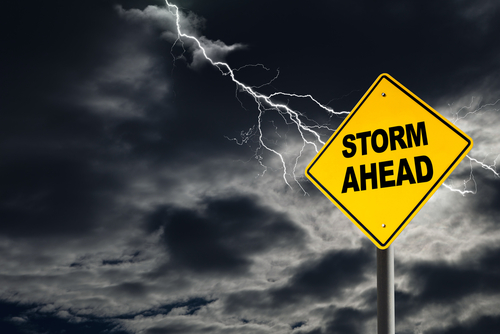This spring may bring about damaging weather events, including heavy rain, severe thunderstorms, tornadoes, and hurricanes. With such threats looming, insurance firm QBE North America has shared best practices to help U.S. business owners and facilities managers stay prepared and protected.

“As we shake off winter, now is the time to identify potential risks, address vulnerabilities, and evaluate the current state of your business,” said Mark McCormick, VP of risk solutions for QBE North America’s Eastern Region. “Having a plan in place at the start of each season can help minimize loss and ensure a quicker recovery if something goes wrong.”
QBE North America suggests the following to help business owners and facilities managers ready their property and employees this spring:
Plan
• Locate, map, and label indoor and outdoor shut-off valves (water, sprinkler, gas, etc.), and know how and when to use them.
• Create an emergency plan, and review and practice it with employees.
• Review and update your business continuity plan. Identify alternate suppliers to keep your business up and running and recover faster if a major disruption occurs.
Inspect and Test
• Perform fleet maintenance, including inspecting vehicles and checking wiper blades, tire pressure, treads, and oil filters.
• Inspect any exterior foliage and trees, and trim as needed to prevent potential property damage and incoming power supply interruption.
• Assess pipes for damage or substantial wear to avoid leaking pipes.
• Check concrete, sidewalks, decks, and any other walking areas where hazards may have resulted from winter weather and address as needed.
• Perform necessary maintenance on any power equipment, including emergency generators and outdoor lighting.
• If your facility includes playgrounds, recreational equipment, or a pool, perform necessary inspections and maintenance.
• Inspect and test all sump pump and de-watering equipment.
• Test your fire and smoke detection systems.
Clean
• Remove any unwanted clutter and debris from the interior and exterior of the property.
• Review stored flammable and combustible liquids, such as old paints, and discard any materials not used within the last year.
• Clear gutters and downspouts, and conduct roof inspections.
• Clear any surface drains and grates. Check for site erosion or changes to drainage paths.
• Clean or replace HVAC air filters, and schedule service if needed.
• Clean and safely store any winter-related power equipment, and secure flammable fuels properly.
Respond
In the event of property damage, there are steps businesses and facilities managers can take to get the problem solved as quickly as possible and ensure the facility is safe from another catastrophe. Here are tips from QBE if a disaster occurs:
• Conduct a damage assessment as soon as the area is safe to enter.
• Inspect all fire protection equipment for physical damage, including sprinkler heads, valves, pipes, hoses, and portable extinguishers.
• Take photos or video of any damage prior to clean-up and any restoration.
• Have damaged equipment cleaned, dried out, and the electrical insulation tested.
• Service heating equipment by a qualified technician before returning it to operation.
• Monitor portable and emergency generator use for carbon monoxide buildup, power back feeds, and improper fueling.
“Some losses are unpredictable, no matter how prepared you are,” said Monique McQueen, VP of property claims at QBE North America. “We recommend business owners review their insurance policies at the start of spring to ensure they have the correct coverage, and note if there have been changes to operations, property, staffing, or the working environment.”
ALSO READ: Back to Basics: Preparing Your Facility for Power Outages
